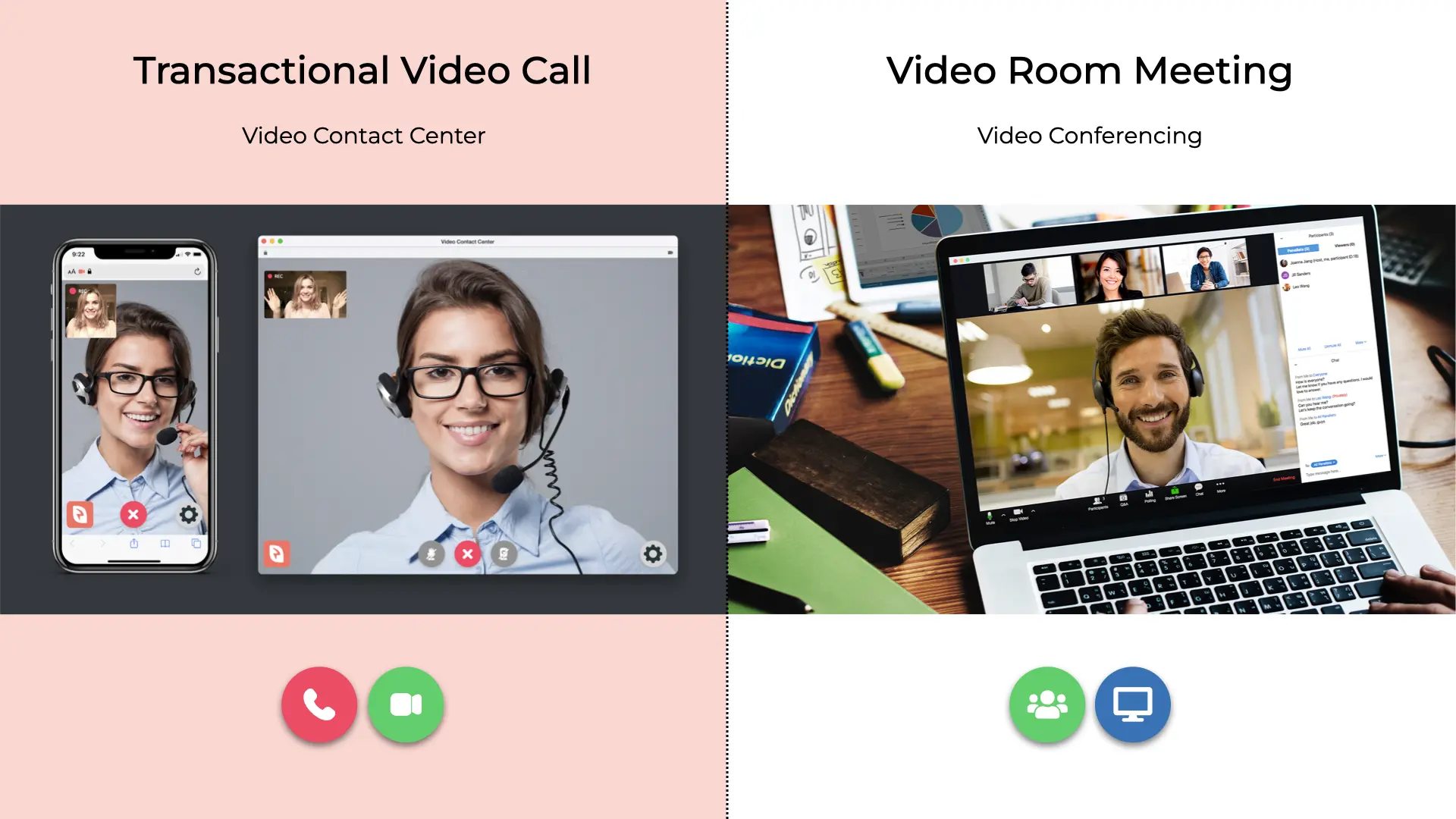Operational differences between transactional video calls and video room meetings
Source: Interactive Powers
Transactional video calls and video room meetings are two different forms of communication that have been made possible by modern WebRTC and SIP technologies. Transactional video calls are a form of one-on-one communication in real-time, while video room meetings are a form of group collaboration linked connection.
Transactional Video Calls
Transactional video calls enable two or three people to communicate with each other in real-time, and are typically used for professional conversations. These calls can be transferred, meaning that each participant communicates together and it’s possible to forward all the communication to the other person with a routing approach similar to phone calls. This makes it easier to keep track of what has been said, as well as ensuring that everyone has a chance to express their opinion in a workflow with end to end video call recording.
Transactional video calls are the ideal choice for businesses that need to quickly and efficiently route multiple video calls to huge team of agents. This type of call queuing allows businesses to quickly and effectively manage and prioritize incoming video calls in customer care, as well as route them to the most appropriate agents. This can help ensure that all calls are answered in a timely manner, and helps to create a proactive positive customer experience.
Video Room Meetings
Video room meetings are used to facilitate a group communication and collaboration, as it allows for multiple people to join the same virtual space and discuss various topics. These meetings can be used for work-related purposes, such as brainstorming ideas or having team meetings. Unlike video calls, video room meetings are not transaccional, no video call transfer is possible as multiple people can be talking at the same time. This mainly allows for more ideas to be shared and discussed in a shorter amount of time.
One downside of video meetings is that it can be difficult to keep track of who said what and which ideas were discussed, especially when dealing with customer attention. However, in transactional video calls, the conversation flows in an orderly routed manner, similar to the operation of bulk call services, which facilitates tracking and ensures that multiple participants have the opportunity to intervene in sequential order. This ensures that all tasks are executed efficiently and transactions are processed smoothly.
Summary Comparison Table
| Features | Transactional Video Calls | Video Room Meetings |
|---|---|---|
| Number of participants | 2 peers (+ Supervisor) | 2 .. 6 peers or more |
| Call Session ID | ✅ Yes (SPLIT ID) | ✅ Yes (Session ID) |
| Call Metadata Fields | ✅ Yes (Tokenized) | ❌ No |
| Call Routing (Queuing) | ✅ Yes (ACD) | ❌ No |
| Call Transfer | ✅ Yes (Voice) | ❌ No |
| Video Call Transfer | ✅ Yes (Voice & Video) | ❌ No |
| Web Collaboration | Live Chat, File Sharing, Dual Screen Sharing, CoBrowsing | Live Chat, File Sharing, Screen Sharing |
| Connection Mode | Real-Time or Scheduled Link | Scheduled Link |
| Protocol Technology | Hybrid (SIP+WebRTC) | Video Room (WebRTC) |
| Call Whispering | ✅ Yes | ❌ No |
| Background Effects | ✅ Yes | ✅ Yes |
| Video Recording | ✅ Yes (Sequential) | ✅ Yes (Video Room) |
| Phone interoperability | ✅ Yes, enable to forward all the conversation (voice) to a phone system. | ❌ No, video room conversation cannot be forwarded to a phone system. |
Conclusion:
Choosing the best communication solution for your business is crucial. Many existing providers offer video room meetings that are not really transactional, which can mostly result in disorganized conversations, wasting time and missed scheduling. This can lead to a negative customer experience and negatively impact business performance. On the other hand, transactional video calls are designed to handle a high volume of conversations in a real-time, organized manner. This type of queuing allows businesses to efficiently manage and prioritize incoming video calls in customer care and route them to the most appropriate agents in real-time. Investing in the right video call service can ensure that all calls are answered promptly and create a positive customer experience.
Interactive Powers - Streamline your business communications
